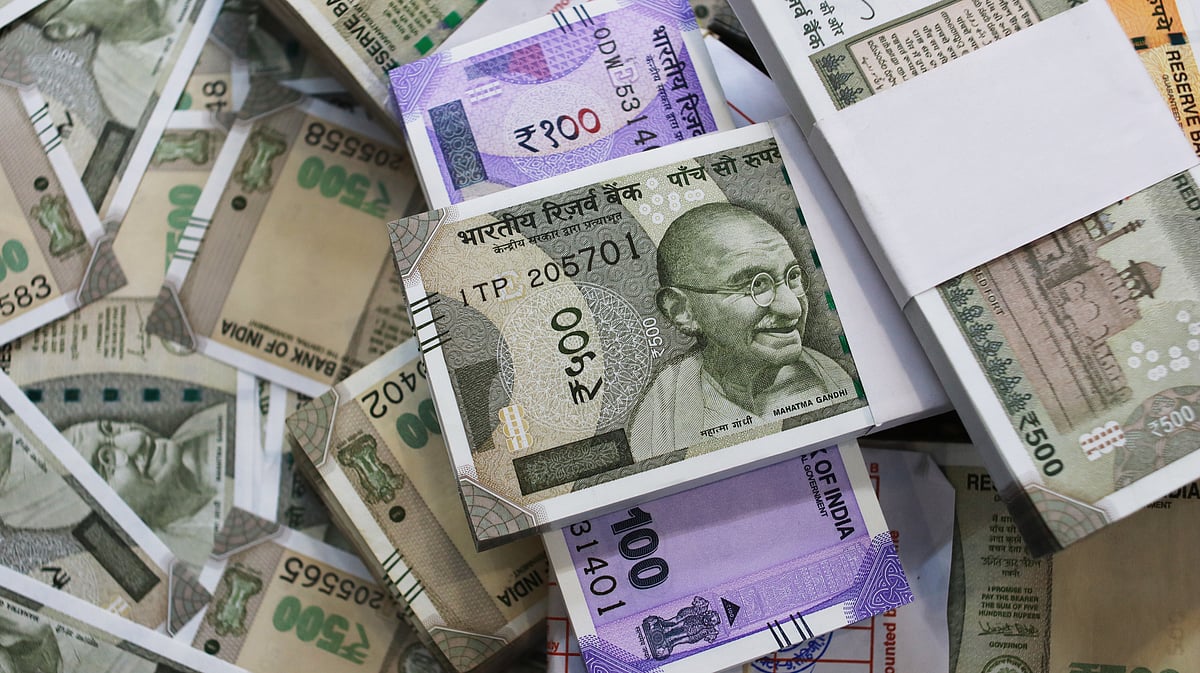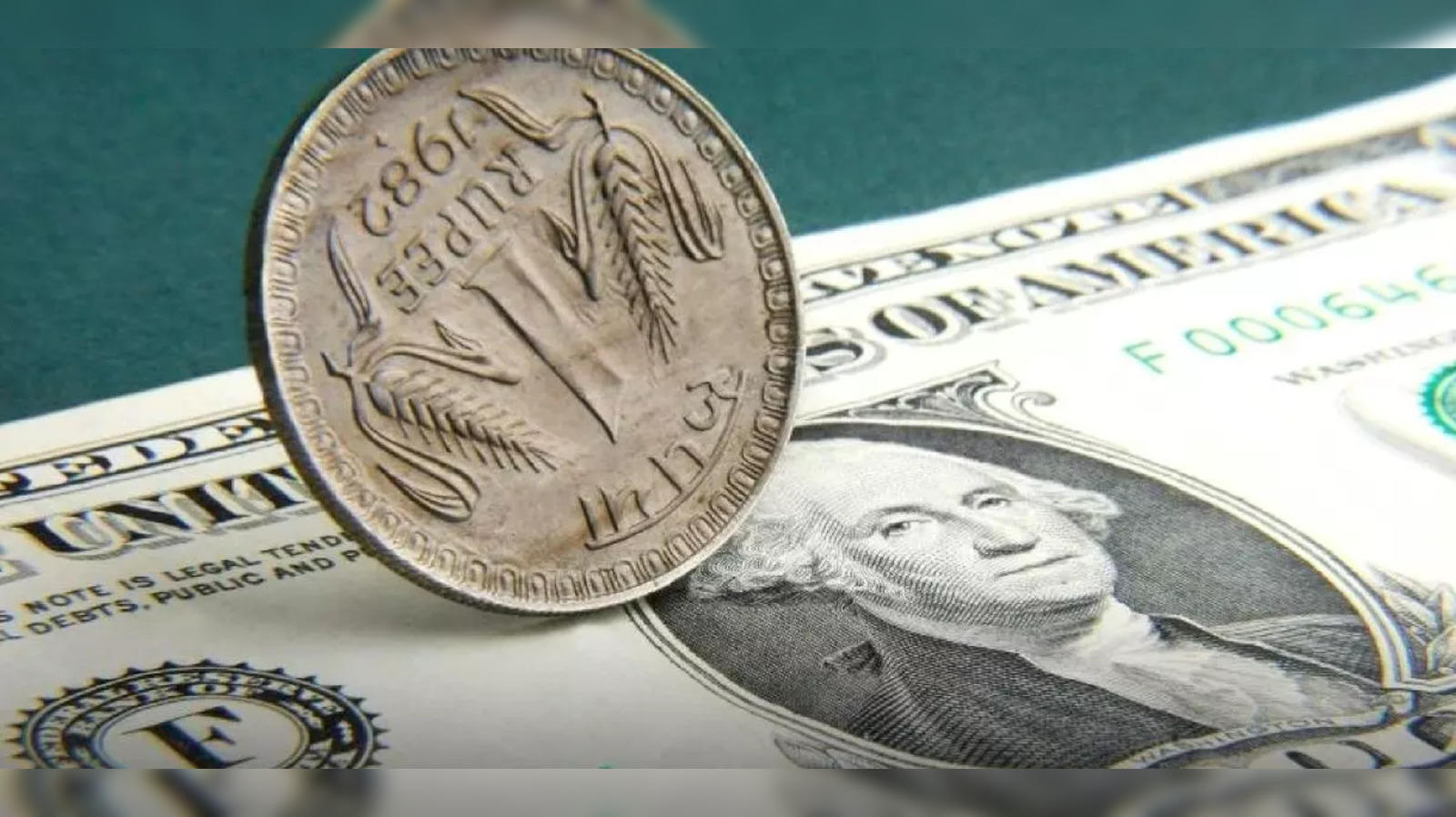Rupee rises 5 paise to 83.28 against US dollar in early trade

Rupee rises 5 paise to 83.28 against US dollar in early trade
In the early trade on Wednesday, the Indian rupee exhibited strength, appreciating by 5 paise to reach 83.28 against the US dollar. This positive movement was attributed to a combination of factors, including the relative weakness of the US dollar and an influx of foreign funds into the domestic equities market. The local currency commenced trading on a higher note, opening at 83.31 against the dollar, surpassing its previous closing value of 83.33.
The strengthening of the Indian rupee against the US dollar can be partially attributed to the prevailing weakness in the American currency. As the US dollar experienced a dip, the Indian rupee found room for appreciation, reflecting the intricate dynamics of the foreign exchange market.
Furthermore, the influx of foreign funds into the domestic equities market contributed to the positive momentum of the Indian rupee. Foreign fund inflows are often considered a key determinant in shaping the currency’s performance, and the attraction of investments into Indian assets can influence the rupee’s value.
The opening value of 83.31 against the US dollar marked a favorable start for the Indian rupee in the trading session. This initial strength suggests a positive sentiment and a potential resilience in the face of global currency fluctuations.
The foreign exchange market is dynamic, and various factors, including economic indicators, geopolitical events, and global market trends, can influence currency movements. The observed gain in the Indian rupee against the US dollar at the beginning of the trading day reflects the interplay of these factors, showcasing the intricate nature of currency dynamics in the financial landscape. As the trading day progresses, market participants will closely monitor these factors to gauge further developments and potential trends in the currency exchange rates.
The dollar index, a metric measuring the strength of the US dollar against a basket of six major currencies, displayed a decline, trading lower by 0.13% at 102.61. This index serves as a key indicator in the foreign exchange market, providing insights into the relative performance of the US dollar against a diversified set of global currencies.
A decrease in the dollar index suggests a weakening of the US dollar compared to the selected basket of currencies. The movements in the dollar index are influenced by various factors, including economic indicators, monetary policy decisions, geopolitical events, and global market sentiments.
In this context, the observed 0.13% decline in the dollar index to 102.61 signifies a relative softening of the US dollar in the foreign exchange market. Investors and analysts closely monitor the dollar index as part of their assessment of currency trends and global economic conditions.
The intricacies of the foreign exchange market and the dynamic nature of currency values mean that fluctuations in the dollar index can have ripple effects on various financial instruments and markets worldwide. A lower dollar index can impact trade balances, commodity prices, and investment decisions, contributing to the overall volatility and dynamics of the global financial landscape.
Market participants will continue to observe the movements in the dollar index, considering it a key barometer for gauging the US dollar’s standing in the international currency markets. The interplay of economic data, geopolitical developments, and central bank policies will continue to influence the trajectory of the dollar index, shaping the broader narrative in the world of foreign exchange.
In the recent trading session, the Indian rupee concluded at 83.33 against the US dollar. Forex traders attributed this positive performance to several factors, including an optimistic outlook in the domestic equity markets and a decline in crude oil prices.
The rupee’s upward momentum was particularly influenced by a weakened US dollar, fostering positive sentiment in the domestic market. Forex analysts anticipate that the rupee may continue to appreciate further, driven by ongoing dollar weakness. The US dollar recently reached its lowest point in over three months amid speculations that the US Federal Reserve might initiate interest rate cuts in the first half of the coming year. This anticipation has contributed to the dollar’s diminished strength.
Furthermore, dovish statements from Federal Reserve officials and a mixed set of economic data from the United States are expected to exert downward pressure on the dollar. The combination of these factors has created a favorable environment for the rupee, allowing it to strengthen against the US currency.
The positive outlook for the rupee is also supported by an overall optimistic sentiment in the domestic equity markets. The interconnectedness of currency and equity markets often results in movements that reflect broader economic sentiments.
The potential for a further appreciation of the rupee is highlighted by these favorable conditions. As the dollar weakens and domestic market sentiments remain positive, the rupee is poised to benefit from these dynamics. Forex traders and investors will closely monitor developments in the global economy, central bank policies, and other market indicators to gauge potential shifts in currency values and market trends. The evolving landscape underscores the complex interplay of various factors that shape currency movements and contribute to the dynamic nature of the foreign exchange market.
In the latest market developments, Brent crude futures, the global benchmark for oil prices, experienced a marginal decrease of 0.06%, settling at $81.63 per barrel. Conversely, US West Texas Intermediate crude futures showed a slight gain of 0.16%, reaching $76.53 per barrel. These fluctuations in oil prices contribute to the intricate dynamics of the global energy market, with various factors influencing supply and demand.
On the domestic front, the equity market demonstrated upward momentum despite mixed global cues. The Sensex, representing the Bombay Stock Exchange (BSE), exhibited a positive trend by trading 380.03 points higher, equivalent to a 0.57% increase, reaching a level of 66,554.23. Simultaneously, the Nifty 50, reflecting the National Stock Exchange (NSE), saw a rally of 111.05 points or 0.56%, reaching 20,000.75. The resilience of the Indian equity market in the face of diverse international signals underscores its sensitivity to both domestic and global factors.
Foreign institutional investors (FIIs) played a notable role in Tuesday’s market activity, emerging as net buyers in the capital market. Their net purchases amounted to shares worth ₹783.82 crore, as indicated by exchange data. The inflow of foreign investments reflects the confidence and interest of institutional investors in the Indian capital market.
These market movements underscore the complex interplay of global and local influences on financial markets. Oil prices, a key economic indicator, can be influenced by geopolitical events, production decisions, and fluctuations in global demand. Meanwhile, the performance of domestic equity markets is influenced by factors such as economic indicators, corporate earnings, and investor sentiment.
The net buying activity of foreign institutional investors suggests a positive outlook on the Indian market, contributing to the upward trajectory observed in the equity indices. As market participants continue to assess and respond to various economic indicators and global developments, the financial landscape remains dynamic and subject to ongoing changes.




